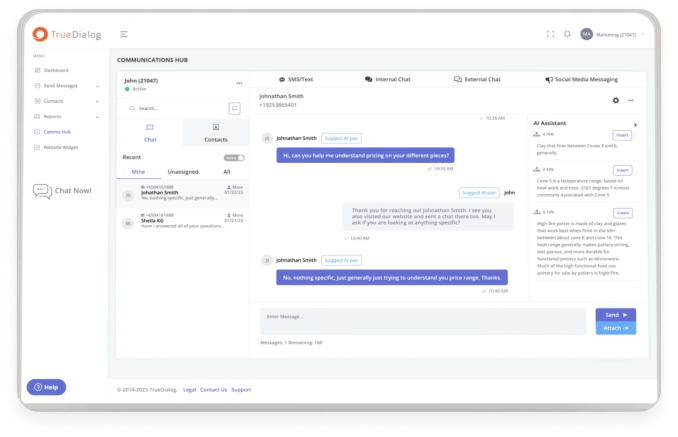The Covid-19 pandemic is dramatically impacting businesses worldwide. Companies and governments are mandating that employees work from home, so managers need to implement best practices for remote employees. Thankfully we have the necessary technologies to maintain our daily lives and sustain communication with customers and employees – we need communication more than ever.
Here are three ways your business or organization can communicate effectively during the Covid-19 crisis.
Text Message Notifications
The text inbox is a special place for most people and in times of social distancing and remote workers, it is more important than ever to help people feel connected to each other and their companies.
Remote employees can feel lonely and disconnected. This is a very new development for millions of employees nationwide and companies need to use every available communication tool to reduce anxiety and build connections. A well-written and heartfelt text message can create a much-needed personal connection with other employees and management. Fortunately, sophisticated texting platforms exist today to enable personal communication at scale with 2-way text conversations as well as mass text message notifications.
When you want to update customers and employees on the status of your business, the quickest way is to send text message notifications. With a 98% open rate, text notifications are much more effective than voice and email to reach your audience.
Many businesses are sending text message notifications for:
- Updates on the impact of Covid-19 on their business
- Work from home schedules
- Status of business closure
- Where to access important information
- Friendly messages that create a positive feeling of connection to the organization
When sending text message updates, be sure you are prepared to respond to questions. By designating a person or a team as the main source of information, organizations can ensure customers and employees are fully aware of the current situation to help reduce anxiety and create a feeling of connection.
Virtual Phone Systems
Given the rapid expansion of this crisis, many companies have been forced to simply forward business lines to employee personal phones to conduct business calls. This can lead to rising cell phone bills for remote employees at exactly the moment they need to cut costs and can also reduce professionalism for the business.
To maintain remote employee productivity and professionalism, businesses need to implement a virtual phone system where business phone numbers can be accessed through personal smartphones.
A virtual phone system enables remote employees to leverage their business phone number and extension to keep work calls separate from personal calls. Advanced virtual phone systems provide important features such as auto-attendant, call routing, professional greetings, interactive voice response, call forwarding, voicemail to email and many other features to keep businesses running smoothly during this time.
It is critical to separate personal calls from business calls and maintain the professional reputation of businesses as they move to a remote workforce. These systems are very quick to set-up and surprisingly affordable – some at just $12/month. The best platforms are cloud-based, easy-to-use and highly scalable as remote employees continue to increase.
Web Conferencing
Businesses have been using web conferencing tools for years, but during this current crisis, web conferencing is soaring as most meetings around the country have become virtual. It’s even more important than ever to stay connected to your team members. Web conferencing keeps the personal touch of an in-person meeting and enables more collaboration through video and screen sharing.
To ensure your web meetings run smoothly, test your web conference software with colleagues to ensure audio and video clarity. After all, a web meeting is useless if others cannot see you or hear you. Have a backup software in place to ensure meeting do not get canceled or postponed due to technical issues. Free services like Google Hangout is a great backup alternative in those cases.
Some employees may miss meetings for various reasons, so make sure to record your web conferences and transcribe the contents of the meeting so you and other members of your team can access it and review later.
Bonus Tip: Recently, many conference companies have become overloaded, especially at meetings or calls that start at the top of the hour or half-hour. Schedule your call to start at an odd time – like 1:07 pm to mitigate this issue and improve the odds that your event will not experience technical issues due to the enormous increase in the volume of virtual meetings.
Summary
Maintaining solid lines of communication can help all of us get through this tough time. The tools and strategies highlighted in this article will help you manage an efficient remote workforce, create a sense of connection/community with your employees and customers, and keep your business operating as smoothly as possible during this Covid-19 crisis. Stay courageous and careful out there. We all have to do our part to get through this together.
Helpful resources for communication during Covid-19
Text message notification solution: Get a free trial of TrueDialog.
Cloud phone system for your remote employees: Get a free trial of VoiceShot.
Free web conferencing tool: Check out Google Hangout.





